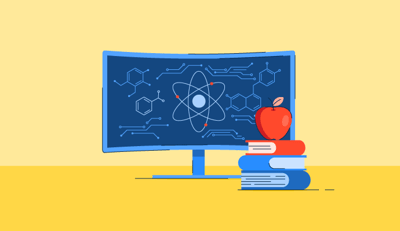October 10, 2025
 by Harshita Tewari / October 10, 2025
by Harshita Tewari / October 10, 2025

If you’re building a Software as a Service (SaaS) product and still treating generative AI like a side project… I’ve got bad news: your competitors aren’t.
They’re building with it. They’re shipping features around it. They’re closing deals faster, supporting users better, and rethinking the entire way their teams work.
This isn’t just about adding a chatbot or slapping an AI-powered sidebar onto your UI. SaaS companies are using GenAI to fundamentally change how they operate, from automating workflows and rewriting playbooks to embedding LLMs directly into the tools their customers use every day.
And that shift is already showing up in the data. The AI SaaS market is expected to reach $101.73 billion in 2025. G2 also found that generative AI features have been added to products across nearly 200 software categories, from product data management (PDM) to human resource management systems (HRMS).
If that sounds overwhelming, don’t worry, G2’s Generative AI Software category is a great place to explore what’s out there and see how other companies are approaching it.
In this report, I’ve broken down how SaaS companies are using GenAI, what adoption looks like, and real-world applications. If you’re still figuring out where GenAI fits into your roadmap, your stack, or your internal workflows, this is where to start.
As of 2025, these are the top use cases for generative AI in SaaS businesses.
| Use case | How it works | SaaS products with the integrated use case |
| Content generation | Users generate text like blog posts, product descriptions, or emails inside the product, and also refine or rewrite content inside the platform | Shopify Magic, Grammarly |
| Personalization | AI customizes product experiences, recommendations, or messaging based on user behavior and context | HubSpot, Zendesk |
| Design automation | AI generates visual assets, layouts, or creative content | Canva Magic, Adobe |
| Language translation | AI translates text or speech in real time within communication or workflow tools | Slack, Zoom |
| Data insights and augmentation | AI analyzes, summarizes, or simulates data to help users make faster decisions | Tableau, AnswerRocket |
| Voice and video intelligence | AI analyzes meetings, calls, or recordings to summarize content, extract insights, or auto-tag events | Gong, Salesforce Sales Cloud |
| In-product AI assistants | GenAI copilots guide users through actions, setup, or decision-making in context | G2.ai , ClickUp |
Note: The use case list is derived from my research on the leading AI features that SaaS companies should include, and the example products are those I have personally seen or worked with.
When it comes to customer-facing features, generative AI is showing up everywhere, from helping users write content and emails to serving up smarter recommendations, automating design, translating in real time, and even acting as a built-in writing assistant.
And companies aren’t wasting time. According to the 2024 SaaS Benchmarks Report by High Alpha, 56% have already launched or tested AI features in their products, while another 25% have them on the roadmap. That leaves just 19% with no plans at all, meaning the vast majority of SaaS companies are already building with GenAI or gearing up to roll it out soon.
One of the easiest ways SaaS products are using GenAI right now? Helping users create content without ever leaving their platform. Whether it’s blog posts, email copy, social media captions, or product descriptions, built-in AI is giving users a head start and saving them tons of time.
Most commonly, writing assistant features are appearing in various SaaS tools, ranging from CRMs and CMSs to help desk platforms and documentation software.
While GenAI-powered content generation helps users create entirely new text within your product, AI writing assistants focus on refinement: rewriting, editing, and optimizing existing content for tone, clarity, and accuracy. The two capabilities often coexist, turning SaaS platforms into end-to-end writing environments where users can ideate, draft, and polish without switching tools.
According to CoSchedule’s “The State of AI In Marketing 2025” report, 84% of marketers say AI has helped them deliver high-quality content faster. That speed advantage doesn’t just apply to blog writers. Sales reps can use AI to refine outreach emails. Support agents can polish canned responses. Internal teams can improve clarity in documentation. With fewer manual edits and faster iterations, writing assistants are helping users get from draft to done in record time.
 Source: CoSchedule
Source: CoSchedule
And the momentum is only picking up. Valued at $1.7 billion in 2023, the AI writing assistant market is on track to grow at over 25% CAGR through 2032, driven by rising demand for faster, smarter content creation across teams and industries.
Here’s another stat to note. According to The Business Research Company, the AI content generation space is set to grow from $3.28 billion in 2024 to $4.84 billion in 2025, and hit $22.91 billion by 2029. That’s a whopping 47.5% compound annual growth rate (CAGR), fueled by the need for faster content, better personalization, and support for multiple languages.
 Source: The Business Research Company
Source: The Business Research Company
GenAI adoption is already mainstream among marketing teams, reflecting how deeply AI-driven content creation has become part of everyday SaaS workflows. 53% use it for quality control tasks like spellchecks and rewrites, 50% for generating marketing content such as blogs and emails, and 48% for creating visual assets for ads and social media. This momentum continues to grow, signaling a clear shift in user expectations. SaaS platforms are now expected to support the entire content lifecycle, from creation to refinement, directly within the product.
If your platform involves writing, editing, planning, or publishing, then incorporating content generation is a straightforward, low-effort GenAI application that users already anticipate. Moreover, if your platform handles any form of written communication, such as emails, documents, descriptions, or support responses, adding a writing assistant would be a simple, high-impact enhancement.
Personalization has moved from a feature to a user expectation. According to Salesforce, 39% of people are comfortable with AI being used to better understand their needs, and 40% people say that AI raises the bar on customer experiences. For SaaS businesses, this means that personalization must be built into the product itself, utilizing GenAI to adapt experiences, recommend actions, and guide users in real-time.
 Source: Salesforce
Source: Salesforce
And business leaders are betting heavily on it. 58% say AI-powered chatbots will be the most impactful personalization technology in the next five years. It highlights the strong confidence in AI to deliver better experiences at scale.
If your platform offers a wide range of features or serves different user roles and goals, then yes. GenAI-powered recommendations assist users in finding what they need more quickly, without overwhelming them with options, which helps increase engagement from the beginning.
Design automation is one of the flashiest (and most useful) ways GenAI shows up inside SaaS products. Instead of starting with a blank canvas, users can generate social media posts, slide decks, product banners, and more with just a prompt. It’s a huge time-saver, particularly for non-designers.
And the market is only getting hotter. According to recent projections, the global AI-powered design tools market is expected to grow from $4.4 billion in 2023 to $26.5 billion by 2033, with a strong CAGR of 19.6%. From marketing and architecture to fashion and product development, industries are turning to AI to accelerate design workflows and boost creative output.

Source: Market.Us
What’s especially interesting is who benefits the most. Professional designers report solid gains (69% say they’re satisfied with AI tools, and 54% report improved quality), and developers report even higher satisfaction at 82%, 68% saying AI improves the quality of their work. With AI handling the heavy lifting, even new designers or hobbyists can now create polished, on-brand designs.
If your product touches marketing, sales, publishing, or creative work, design automation is worth considering. It’s quite impactful for teams that need to move fast without sacrificing polish.
Language barriers are an instant blocker for product adoption. GenAI is helping SaaS companies break through by translating content, support, and even in-app interactions in real time. Instead of jumping to Google Translate or struggling through English-only instructions, users get a more natural, localized experience, right where they are.
The market’s growth is driven by demand for real-time, high-accuracy translation across industries. According to Future Market Insights, the AI language translation tools market is projected to grow at an 8.5% CAGR from 2024 to 2034.
Adoption is also accelerating. A recent survey indicates that while over 70% of language service providers have adopted traditional language technologies, AI tools are quickly catching up. If all planned and current implementations proceed, AI-powered translation tools will reach the same level of adoption. In fact, only 15% of companies report having no plans to implement GenAI translation at all.

Source: ELIS Research
If your product serves a global audience, or plans to, then yes. Language translation is one of the clearest ways to make your SaaS platform more inclusive, user-friendly, and future-ready.
Instead of digging through spreadsheets or running complex queries, users can ask plain-language questions and get AI-powered summaries in seconds. Some tools even go further, flagging anomalies, writing performance highlights, or identifying correlations automatically. It’s a shift from static reports to living, conversational analytics.
And the momentum behind this shift is massive. The global AI in data analytics market is forecast to grow from $18.5 billion in 2023 to $236.1 billion by 2033, with a CAGR of 29%.
In parallel, 60% of senior executives say they have already seen ROI from AI-enhanced decision-making, proving just how impactful AI-driven insights can be for teams that rely on data to move quickly.
 Source: Adobe
Source: Adobe
If your product collects any kind of operational, behavioral, or performance data, this is one of the highest-leverage GenAI use cases to explore. Specifically valuable for platforms with broad user bases or cross-functional data needs.
Voice and video conversations are some of the richest sources of customer insight — but historically, they’ve been hard to track, analyze, or share at scale. GenAI is changing that. Instead of relying on memory or scattered meeting notes, AI-powered voice and video intelligence tools can transcribe calls, summarize key points, identify sentiment, and tag action items automatically.
Whether it's a sales demo, a support call, or a team huddle, every conversation becomes a searchable, structured asset within your product. A recent survey revealed that 76% of companies now embed conversation intelligence in over half of their customer interactions, making it a core part of how teams engage and learn.
The market is expanding rapidly, too. The conversation intelligence software space is projected to grow from $25.3 billion in 2025 to $55.7 billion by 2035, with a CAGR of 8.2%. Meanwhile, the speech analytics market, a key component of this use case, is projected to grow from $5.11 billion in 2025 to $18.85 billion by 2034, highlighting its rising importance in product ecosystems.

Source: Precedence Research
If your product involves customer calls, team collaboration, or service delivery, absolutely. GenAI-powered voice and video intelligence gives you a way to mine every conversation for insights, and use that data to improve workflows, coaching, onboarding, and more. It’s particularly valuable in tools for sales, support, recruiting, and remote collaboration.
AI assistants are becoming the new default for user support, embedded directly into the product experience. Instead of opening a new tab or waiting for a help desk, users can ask questions, get step-by-step guidance, or troubleshoot issues directly in the interface. These assistants pull from product documentation, help centers, knowledge bases, and even past user behavior to deliver fast, relevant answers.
The biggest shift? These assistants aren’t just passive chatbots. GenAI enables them to become proactive copilots, suggesting next steps, highlighting features, or even completing actions based on natural language prompts.
It’s no surprise that investment is growing fast. Almost 51% of organizations are actively exploring AI agents, and an additional 37% are already piloting them, signaling strong intent to adopt. And the market growth is in consensus: the global AI agents market, valued at $5.4 billion in 2024, is projected to surge to $50.3 billion by 2030, growing at a remarkable 45.8% CAGR. What was once a novel feature is rapidly becoming a core expectation.

Source: Grand View Research
If your product includes complex workflows, multiple modules, or a steep learning curve, an in-product AI assistant can be really helpful. It meets users where they are, adapts to their behavior, and lightens the load on your support and success teams.
SaaS leaders aren’t stopping at content generation or chatbots. As generative AI capabilities expand, so do the ways software teams are putting them to work, often in subtle but powerful ways that make products smarter, faster, and more helpful by default.
Here’s a breakdown of lesser-known AI features being built into SaaS products:
Embedding GenAI isn’t just about product innovation; it’s also opening up new revenue models. From tiered access to usage-based pricing, SaaS businesses are starting to treat AI like a premium utility.
Here’s how GenAI features are being monetized today:
Let’s be clear: GenAI is no longer a novelty. It’s rapidly becoming foundational to how users engage with SaaS products.
Throughout this piece, we’ve seen how top platforms are integrating GenAI to simplify onboarding, personalize experiences, surface insights, and automate repetitive tasks. From AI assistants to smart recommendations and real-time transcription, these features are shaping user expectations across industries.
And it’s not just about better experiences. Companies are finding real value. They're monetizing GenAI through premium features, boosting adoption with intelligent UX, and positioning themselves as leaders in their category. The growth figures from AI agents to conversation intelligence only confirm that momentum is accelerating.
So if you’re building a SaaS product today, the question isn’t whether you should adopt GenAI. It’s how quickly you can design meaningful use cases that serve your users, fit your product, and drive ROI.
Because the gap between products that use GenAI well and those that don’t? It’s getting wider. And customers are already starting to notice.
Now’s the time to build what they’re expecting next.
See GenAI in action. Discover the 40 most popular AI tools powering innovation across industries.
Harshita is a Content Marketing Specialist at G2. She holds a Master’s degree in Biotechnology and has worked in the sales and marketing sector for food tech and travel startups. Currently, she specializes in writing content for the ERP persona, covering topics like energy management, IP management, process ERP, and vendor management. In her free time, she can be found snuggled up with her pets, writing poetry, or in the middle of a Netflix binge.
Data labeling teaches machines how to understand different pieces of information. It is the...
 by Sagar Joshi
by Sagar Joshi
Business intelligence (BI) is making a significant impact across industries by helping...
 by Sagar Joshi
by Sagar Joshi
The AI in education market, valued at $2.5 billion in 2022, is projected to reach $88.2...
 by Sagar Joshi
by Sagar Joshi
Data labeling teaches machines how to understand different pieces of information. It is the...
 by Sagar Joshi
by Sagar Joshi
Business intelligence (BI) is making a significant impact across industries by helping...
 by Sagar Joshi
by Sagar Joshi


